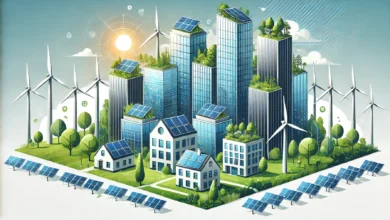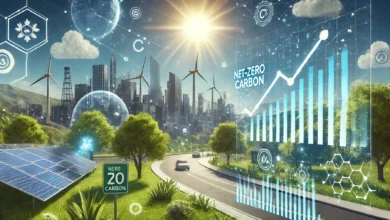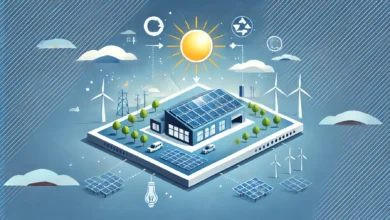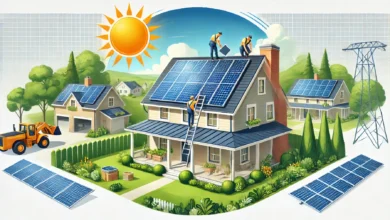Energy Recovery Ventilator (ERV)
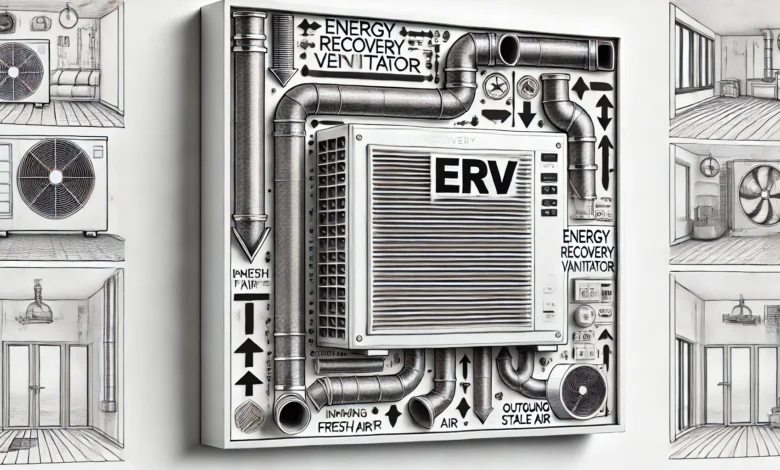
Indoor air quality and energy efficiency are getting more attention in both homes and commercial buildings. The Energy Recovery Ventilator (ERV) addresses both problems at the same time. Learn more about ERVs and how they work to help you take control of your indoor space and save energy as well.
Contents
What is an Energy Recovery Ventilator (ERV)?
An Energy Recovery Ventilator is a ventilation system that will take stale indoor air and ventilate it with fresh outdoor air while recovering a portion of the energy — in fact removing both heat and humidity. In many cases, ERVs provide comfort and efficiency over a broader spectrum of climates than other more traditional types of ventilation systems that only recover heat to reduce heating load.
How Does an ERV Work?
ERV’s work by drawing in outdoor air and pushing out indoor air at the same time by using a heat exchanger. The heat exchanger allows for the transfer of thermal energy and water vapor through the system, while keeping the two air streams separate.
- In the winter: The ERV takes thermal energy from the stale outgoing air stream and uses it to warm the incoming cold air stream, which simplifies the load on the heating demand.
- In the summer: The ERV will exchange some of the heat and humidity from the incoming hot air stream to the outgoing cooler indoor air stream which simplifies the load on the air conditioning.
By moderating the temperature and humidity values of the incoming air before they enter your space, ERVs will help reduce the loads on your heating and cooling systems leading to increased energy efficiency.
The Main Resources of an ERV
- Improved Indoor Air Quality: Constantly allow fresh air in while exhausting dust, dust mites, other irritants, and pollutants!
- Energy Savings: Lower heating and cooling loads by recovering 70%-80% of the energy in exhausted air.
- Humidity Control: Provides more predictable humidity levels in your house for greater comfort.
- Prolonged Lifetime of HVAC System: Reduces demand on your HVAC system by sharing ventilation load.
- Increased Comfort: Experience fresh air without those wild fluctuations in temperature (and humidity) you would have from opening a window.
ERVs as Compared to HRVs: What is the Comparison?
| Category | ERV (Energy Recovery Ventilator) | HRV (Heat Recovery Ventilator) |
|---|---|---|
| Humidity Transfer | Yes | No |
| Climate | Both humid and dry climates | Cooler, drier climates |
| Main Focus | Temperature + Humidity Control | Only temperature |
| Use | If a house needs a humidity balance | If a house needs pure ventilation |
Whether you utilize an ERV or HRV is largely dependent on your climate and your indoor air needs.
Where are ERVs Most Useful?
- Houses: Provides additional benefits to airtight modern houses where natural air exchange is nearly non-existent.
- Offices: Help promote healthy workplaces by addressing ventilation and conserving energy.
- Schools: Provide a better learning environment by continuously supplying fresh air with comfortable indoor temperatures.
- Healthcare Facilities: Important to maintain hygienic indoor environments without wasting energy.
Potential Energy Savings of ERV systems
Industry studies have shown you can save heating and cooling costs of 30% or more with an ERV depending on the design of your climate and house. The numbers become even more significant when paired with an efficient system, either a solar panel system or an energy-efficient HVAC system.
By reducing the demand on your heating and cooling system, you will receive the ongoing benefits of savings while ensuring you provide good indoor air quality and comfort.
Frequently Asked Questions (FAQ)
Can I install an ERV into older homes?
Yes, ERVs can generally be installed into many older homes. Correctly installing an ERV is critical to obtain the maximum benefit possible.
Does an ERV replace my current HVAC system?
No. An ERV is designed to aid your existing HVAC by addressing ventilation without replacing heating and cooling systems.
How often does an ERV require maintenance?
Usually, you will want to check, clean or change the filters every 3–6 months, and check the core every year.
Is an ERV worth it in a mild climate?
Yes, an ERV is capable of improving air quality and will reduce a utility bill slightly, however, the savings will be more realistic in an extreme climate.
How does an ERV compare to just opening windows?
An ERV operates year-round, even during summer and winter. Therefore, with an ERV you get filtered, humidity-controlled fresh air as opposed to just opening windows which will bring in dust, particulates, allergens and uncontrolled humidity.
Adding an Energy Recovery Ventilator (ERV) to your home or building design is an important step towards healthier living and better energy efficiency. Understanding how ERVs function and where they thrive will enable you to foster a healthy and comfortable building stock for many years to come.
